Basement walls that bow, or tilt inwards, can be a sign of a serious structural issue. If left untreated, the problem can worsen and lead to more serious damage to your home.
If you have noticed that your basement walls are starting to bow, there are a few things you can do to fix the issue.
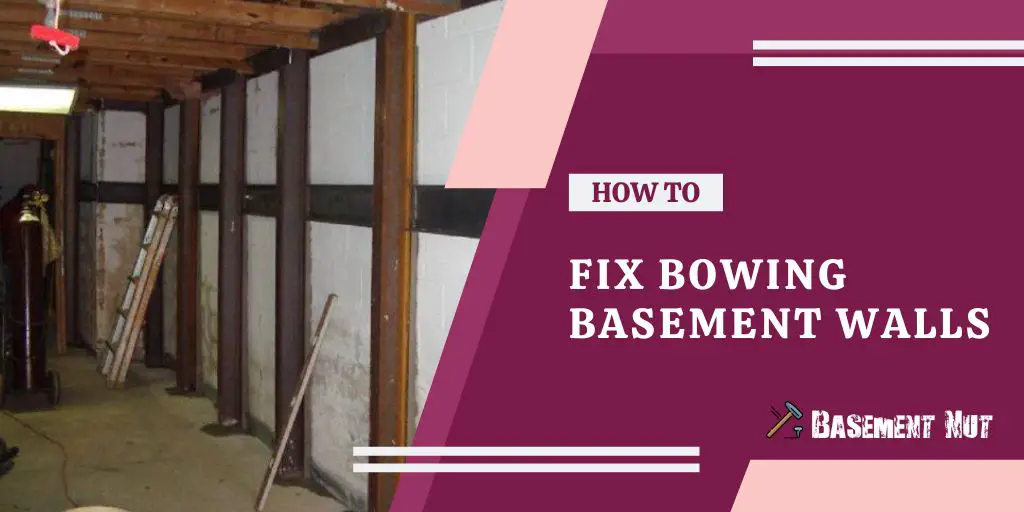
This post on how to fix bowing basement walls, we will explain what causes bowing basement walls and how you can take corrective measures to restore their stability.
We will also provide tips on preventing future wall bowing. So if your basement is showing signs of instability, keep reading for helpful advice.
5 Common Causes of Bowing Basement Walls
1. Hydrostatic Pressure: Hydrostatic pressure is one of the most common causes of bowing basement walls. When water seeps into your basement, it puts pressure on the walls and can cause them to bow inward. If your basement is prone to flooding or has a high water table, you may be at risk for hydrostatic pressure.
2. Soil Movement: Soil movement is another common cause of bowing basement walls. When the ground around your home shifts or settles, it can pressure your foundation and cause your walls to bow. This is especially common in areas with expansive clay soil.
3. Poor Drainage: Poor drainage is another leading cause of bowing basement walls. Water can pool around your foundation and seep into your basement if your home has poor drainage. This can pressure your walls and cause them to bow inward over time.
4. Plumbing Leaks: Plumbing leaks are another common cause of bowing basement walls. If your home has leaking pipes, the water can seep into your basement and put pressure on your walls. This can cause them to bow inward over time. It can also lead to mold and mildew growth.
5. Foundation Cracks: Foundation cracks are another common cause of bowing basement walls. If your foundation has cracks, water can seep in and put pressure on your walls.
This can cause them to bow inward over time. It can also cause serious structural damage to your home. If you notice any cracks in your foundation, getting them fixed as soon as possible is important.
8 Effective Methods on How to Fix Bowing Basement Walls
1. Using Steel Wall Anchors
One common method for fixing bowing basement walls is to use steel wall anchors. This involves attaching steel plates to your walls with expansion bolts.
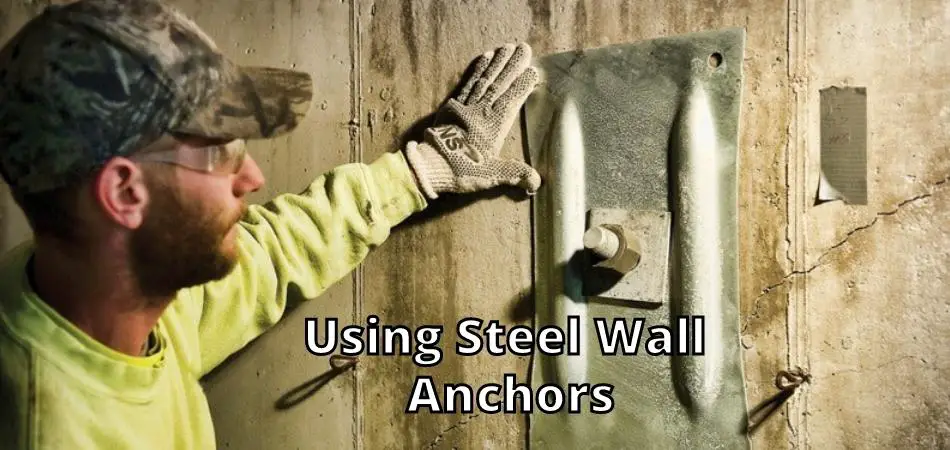
The plates are then connected with cross-bracing and turnbuckles. This system applies pressure to the outside of your walls and pulls them back into place.
2. Installing Carbon Fiber Strips
Another common method for fixing bowing basement walls is to install carbon fiber strips. For installing carbon fiber strips, small holes are drilled into your walls, and the strips are glued or epoxied into place.
The strips help to reinforce your walls and prevent them from bowing further. If your walls are severely damaged, you may need to install carbon fiber strips in combination with other methods.
3. Using Epoxy Injection
Epoxy injection is another common method for fixing bowing basement walls. This involves injecting epoxy into cracks in your walls to reinforce them and prevent further damage. Epoxy injection is most effective on small cracks and can be used on poured concrete and block walls.
When you install an epoxy injection system, a professional will drill small holes in your walls and inject the epoxy into them. The epoxy will then harden and fill the cracks, reinforcing the wall and preventing water from seeping in.
4. Installing Intelli Brace Beams
Another common method for fixing bowing basement walls is to install Intelli Brace beams. Intelli Brace beams are steel beams that are placed on the wall and connected to the floor and ceiling joists.
The beams work by transferring the weight of the house from the wall to the beams. This removes the pressure off the wall and prevents it from bowing further.
5. Using Helical Tiebacks
This is the most common method used to fix bowing walls. First, a hole is drilled through your foundation from the inside of your basement.
You Can Check It Out to Fix Hydrostatic Pressure in Basement Wall
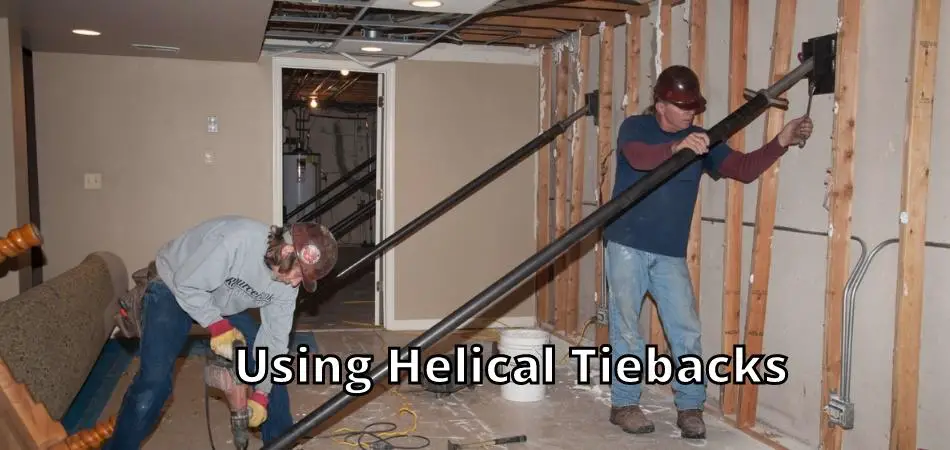
A long metal rod is then inserted into this hole and screwed into the ground outside your foundation. As the rod is tightened, it pulls on your wall and straightens it out.
When using this method, it’s important to ensure that the hole drilled is properly sealed so that no water or moisture can get in.
6. Installing Plate Anchors
This method requires access to the outside of your foundation. If you have a crawl space, this may be possible. If not, you will need to excavate around the foundation.
Plate anchors are essentially big washers with spikes on them. They’re driven into the ground outside your foundation and then connected to the wall with a steel rod.
This pulls the wall back into place and prevents it from bowing further. It’s a relatively simple process, but it does require some excavation and heavy lifting.
7. Forcing Wall Brace
You can use this method to fix a wall that’s already begun to bow. The forcing wall brace is a steel rod that you screw into the floor and ceiling of your basement. Once it’s in place, you turn a nut on the rod to put pressure on the wall, which forces it back into place. It is great for walls that have already begun to bow, but it can also be used as a preventative measure for walls that are starting to show signs of bowing.
8. Using a Wall Jack
This is a mechanical way to stabilize your wall using a system of brackets, jacks, and wood shoring. The process starts by attaching metal brackets to the floor and ceiling joists on both sides of the wall at 4-foot intervals using 3-inch lag screws.
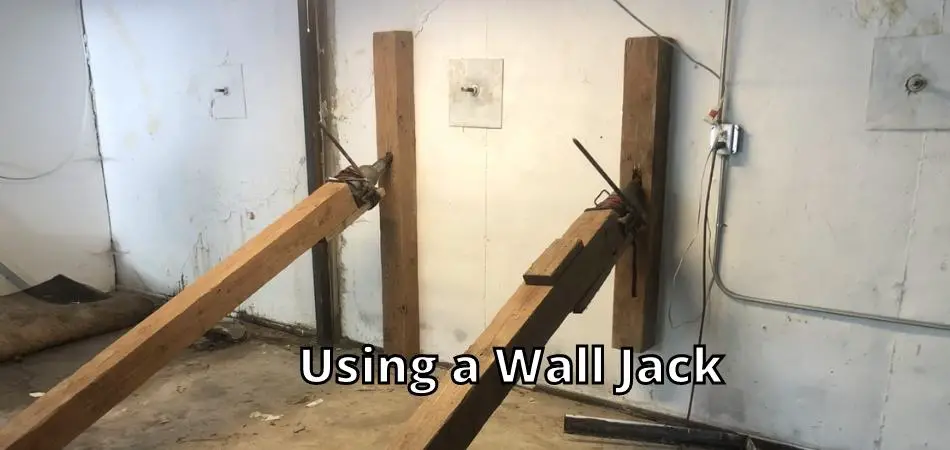
Then 2x4s are placed horizontally between the brackets, and a hydraulic jack is used to apply pressure to the wood shoring, pushing against the wall and stabilizing it.
You Can Check It Out How to Make Basement Bigger
How Do You Fix a Bowed Basement Block Wall?
The first step is to find out what is causing the problem. The most common cause of a bowed basement wall is hydrostatic pressure. Water builds up in the soil and puts pressure on your foundation walls. There are several ways to relieve this pressure, including:
- Installing an interior drainage system
- Excavating around the perimeter of your foundation and installing drainage tiles
- Applying hydrostatic relief vents to your foundation
Once you have relieved the pressure on your foundation walls, you can start repairing them. The most common repair method is to install carbon fiber strips. These strips are bonded to the wall with an epoxy resin. They act as reinforcements, helping to prevent the wall from bowing further.
Another repair method is to install helical piers. These metal shafts are driven into the ground next to your foundation. They are then connected to the foundation with brackets. The piers transfer the weight of your house from unstable soil to more stable ground.
If your foundation walls are severely damaged, you may need to have them replaced. Again, this is a major repair project that should only be done by a professional.
How Do You Fix a Pushed Basement Wall?
The first step is to determine the source of the pressure. For example, if the land around your home is higher than the foundation, water can seep in and create hydrostatic pressure, pushing your basement walls outward.
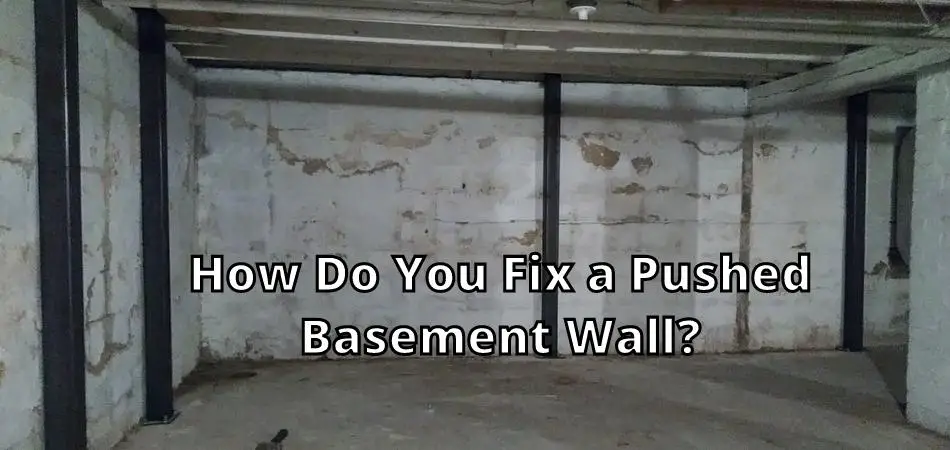
Another possibility is that the soil next to your foundation has shrunk or eroded due to drought conditions, leaving room for your basement wall to bulge outward.
If you have a bowing or leaning basement wall, it’s important to take action immediately to prevent further damage to your home. First, ensure that your gutters are clean and clear of debris so they can properly channel water away from your foundation.
You may also need to install an interior drainage system to keep water from seeping into your basement in the first place. Finally, if the damage to your basement wall is severe, you may need to have it repaired or replaced by a professional.
Wrapping Up
Basement walls that bow inward are common in homes and can often be fixed without too much trouble. In this blog post, we’ve walked you through the steps to take to correct this issue in your own home.
If you have a bowed basement wall, there are several things you can do to fix it, depending on the severity of the problem.
You can install carbon fiber strips to reinforce the wall if the damage is minor. However, for more serious damage, you may need to replace the entire wall. Each method has its own benefits and drawbacks, so choosing the right one for your situation will require careful consideration.
No matter what method you choose, it’s essential to take action right away to prevent further damage to your home. We hope this blog post on how to fix bowing basement walls has been helpful!
If you have any questions or need assistance with correcting bowing basement walls in your home, please don’t hesitate to contact us.
You Can Chack It Out Fix a Leaky Basement Wall from The Outside
